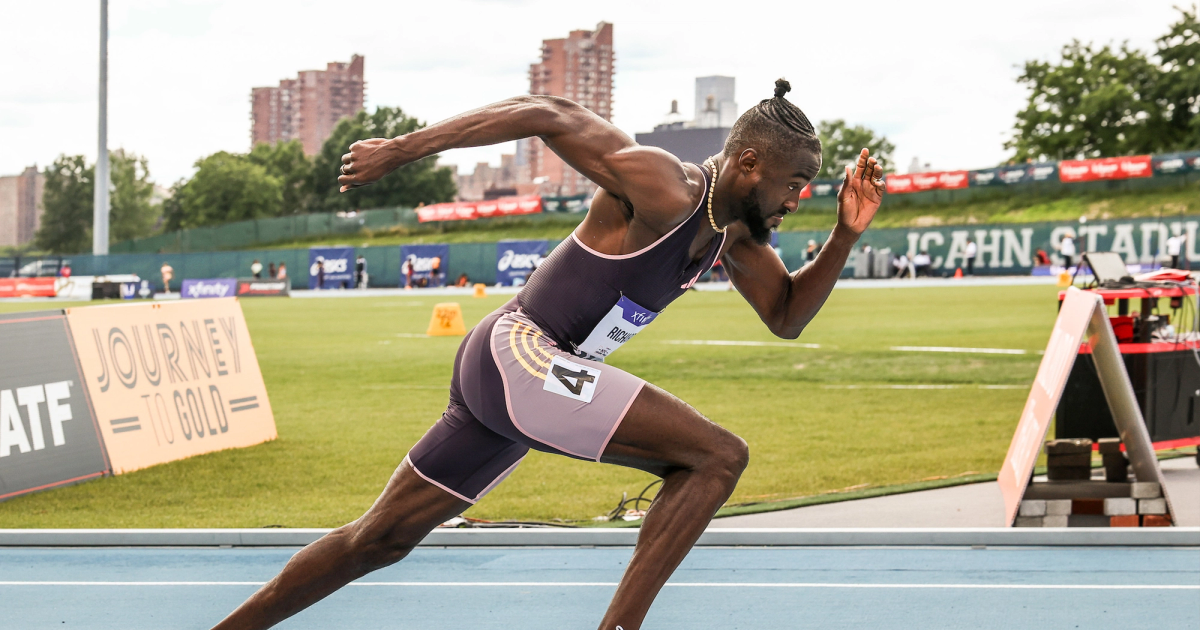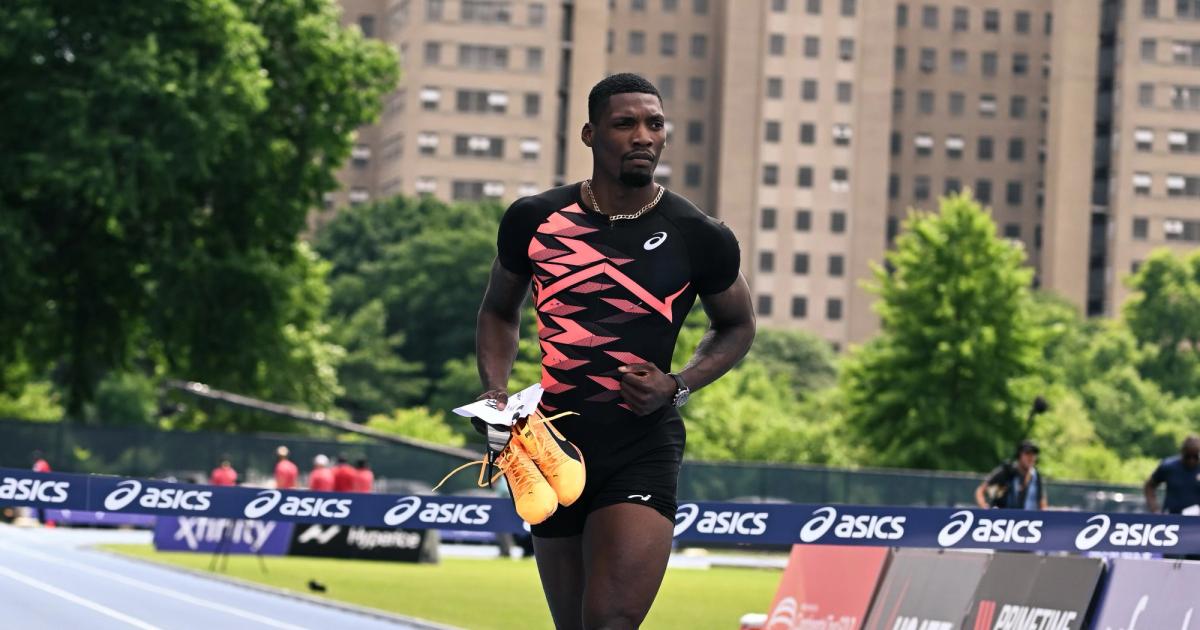By Chris Chavez
June 12, 2024
It wasn’t just Fred Kerley who had some issues with the blocks at the New York City Grand Prix this weekend. There was a delay before the 200m with Noah Lyles. So what was the deal with the blocks? Kerley didn’t hold back by calling them “elementary school blocks” and told reporters, “We at a professional meet… so you should have professional blocks with professional sensors on them.”
He may have a point here!
Another sprinter I spoke with on the condition of anonymity – presumably to avoid retaliation from Big Block – told me that when athletes came out to the facility on Friday afternoon, there were bricks set on the track so that blocks would stay put. From my own experience attending track practices with my team on Tuesday evenings at Icahn Stadium, there had been last-minute work done on the track to get it ready for the Grand Prix and other summer races. So there may have been patches where the surface was a bit slippery. Overall, the track is fine, though! (Sydney McLaughlin-Levrone giving the 400m American record a scare proves that.)
The Omega blocks at the Diamond League and Olympics have bigger padding and are heavier so they don’t slip. The World Championships use Seiko starting blocks, which are also more robust. The anonymous sprinter I spoke with did laugh in agreement when I asked if the blocks used at the Grand Prix were “high school blocks” and said these are the ones that are used in prep and college races and practices.
There’s a report that Usain Bolt bought himself a pair of Omega starting blocks for about $5,000 to prepare for the London Olympics – a year after his false start at the World Championships in Daegu. Quality blocks aren't cheap. But we shouldn’t cut corners about the few pieces of equipment that aspiring world-class meets are expected to provide for their world-class athletes.
The blocks used in New York were perfectly adequate for most uses. They link to a false start detection system. They measure reaction times. And they were monitored attentively by an army of World Athletics officials. But the first rule – okay, maybe not the first rule, but it’s a top-15 rule – of hosting a meet is “Don’t give the sport’s top dogs something to complain about in their post-race presser.”
While we here at TLC are fans of PURE RACING, we recognize that especially in the sprints, people also want to see blazing fast times. If athletes feel hampered at the start by blocks MacGyvered together with bricks and other construction detritus, we’ve already lost half the fan support battle.

Chris Chavez
Chris Chavez launched CITIUS MAG in 2016 as a passion project while working full-time for Sports Illustrated. He covered the 2016 Olympics in Rio de Janeiro and grew his humble blog into a multi-pronged media company. He completed all six World Marathon Majors and on Feb. 15th, 2025 finally broke five minutes for the mile.




